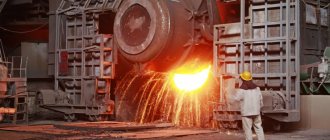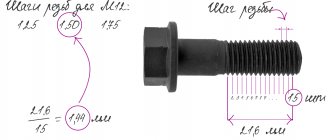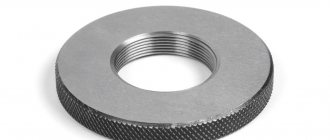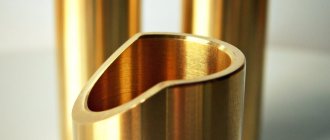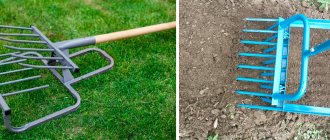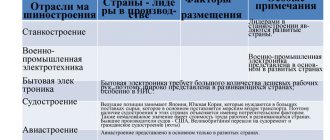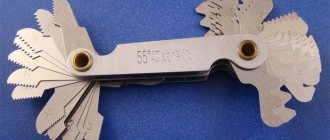Today, using extrusion technologies they produce:
- food products - textured soy products (soy meat, soy mince), instant products (porridge, bacon, etc.), raw materials for the confectionery industry, corn sticks, etc.;
- complete feed based on grain (highly effective when feeding young animals in the early stages of weaning);
- a substitute for high-protein components of animal origin in compound feeds - extruded full-fat soybeans;
- high-protein feed from waste from slaughterhouses, meat processing plants, poultry farms with the destruction or decontamination of all microorganisms to safe levels;
- high-quality raw materials for the paint and varnish industry - soybean oil.
Extruded soybean
[td]
Extruded soybean
The most valuable protein and energy component of feed for all technological groups of pigs. Excellent balance of amino acids and essential fatty acids. The level of input into mixed feed is 10–30%.
It is desirable for use in farms where there are problems with raising piglets and reproduction in sows. Increases production performance by 5–20%. Reduces the cost of diets by saving animal feed by 20–30%.
Some parameters of extruded soybeans (per 1 kg):
- urease activity - 0.1–0.2 units. pH;
- feed units - 1.46;
- exchange energy - 15.2 MJ;
- crude protein - 360–380 g;
- crude fat - 80 g;
- lysine - 29 g.
Technical description
Extruded foam is made from a foamed polymer mass with fire retardants and other additives. It is passed through an extruder to compact and form blanks. The release form depends on the purpose. These can be decorative items, pipe shells or slabs. The latter are in great demand for performing thermal insulation measures. The canvases have several versions with the following features:
- thin backing;
- corrugated surface for plastering;
- the edge is rectangular, with a mounting projection for overlap (quarter) or with grooves and ridges to form a monolithic web.
The result is a lightweight material with a low thermal conductivity coefficient: 25-45 kg/cub.m. and at a temperature of +25 degrees Celsius about 0.032 W/m*K. (0.026 at +10 degrees). For comparison: 4 cm of EPS is comparable to 14 cm of wood, 38 cm of concrete or 85 cm of brickwork. Samples with low specific gravity are used for insulation of walls and ceilings, heavier samples are used for foundations and plinths.
Other technical characteristics of extruded polystyrene foam are as follows:
| Parameter | Meaning | Description |
| Water absorption | 0,2 % | Moisture does not penetrate deeply only into the surface layer, since the structure of the material is represented by closed cells. The polymer as a whole can be used as additional waterproofing of the base. |
| Vapor permeability | 0.007-0.012 mg/m*h*Pa | This suggests that the fabric practically does not “breathe”, which explains the restrictions on use without ventilation systems. |
| Frost resistance | From 1000 cycles | Technical and physical parameters are maintained when the plates are cooled to -50 degrees Celsius. It is possible to reduce thermal conductivity by 5% after 1000 freeze-thaw cycles. |
| Working temperature | -50-+75 degrees Celsius | When the polymer fabric is heated above +80 degrees, the release of toxic substances begins. Therefore, for interior work in rooms with such differences, it is better to choose an alternative insulation. |
| Tensile strength | 2-3.6 kgf/sq.cm | The bending strength is 4-7.1 kgf/sq.cm. Both parameters depend on the density and thickness of the workpieces. That is, the values indicated are the maximum averaged ones. |
| Flammability | G3, G4 | The use of fire retardant components allows the class to be reduced to G1. The ability to burn cannot be completely excluded. But the material’s fire resistance is high enough so that it can be safely used in industrial, urban and private construction. |
| Sound absorption | 25 dB | XPS series EPS is used in facilities where impact-type noise insulation is needed. |
| Life time | From 45 years old | The service life declared by the manufacturer is valid only if the technological requirements for installation are met. |
Extruded polystyrene foam has standard dimensions: width - 600 mm (sometimes 580 mm), length - 1200 or 2400 mm (can be 1000 mm). Manufacturers also offer additional services for the implementation of projects according to agreed parameters with customers. The thickness of the products is in the range of 20-100 mm. The material is sold in packages of 4 pieces, which depends on the dimensions of the sheet. As a rule, the total height of the pack is approximately 40 cm.
See also: Catalog of companies that specialize in home insulation
Pros and cons of insulation
Considering the technical characteristics, we can conclude that the material is light and moisture resistant. At the same time, good strength is observed, which contributed to the emergence of a new thermal cladding such as sandwich panels.
Sandwich panel Source shumoizol.com
The advantages don't stop there. The slabs are also characterized by the following:
- inertness to fungi and mold (synthetic fabric is not a breeding ground for bacteria and parasites);
- resistance of polymer products to rotting and natural decomposition;
- versatility of use without the need for additional moisture protection of EPS insulation.
The chemical inertness of polystyrene foam is not absolute. The slabs are destroyed under the influence of building materials such as:
- oils – petroleum products;
- solvents – acetone, toluene;
- bitumen mastics and adhesives, paints and varnishes based on inorganic solvents.
It is worth noting that some advantages of EPS can also be disadvantages. These properties include vapor permeability, synthetic composition, cellular structure.
Enlarged EPPS Source sladkiyson.net
Let's take a closer look at each parameter:
- The material does not “breathe”. When insulating structures, the dew point shifts towards thermal insulation. That is, moisture will accumulate in polystyrene foam and turn into condensation, since steam does not pass through the slabs. This is a minus for both internal and external work with wooden buildings. Here it is necessary to provide natural or forced ventilation to solve the problem.
- By nature, the polymer composition cannot be classified as an absolutely environmentally friendly group of materials.
- High density is achieved through extrusion, but the insulation does not change the structure of foamed polystyrene. This explains the possibility of using the material as additional sound insulation. But EPS cannot absorb and reflect sound waves, it can only muffle (reduce the amplitude of vibrations).
In addition to the above, the disadvantages include sensitivity to ultraviolet rays. That is, the insulation is subject to mandatory protection from direct exposure to the sun. This can be cladding or facing material, plaster. Another disadvantage is that rodents easily chew through the slabs, which negatively affects the overall situation with heat loss.
Chewed polystyrene Source yandex.net
Soybean meal (after extrusion)
The most valuable high-protein component of feed for all groups of pigs, cows, and poultry. The nutritional value is almost similar to soybean meal (sometimes exceeding it). Helps increase high gains in live weight and meatiness of carcasses. Can be used effectively on everyone, incl. final phases of fattening to increase the yield of meat in carcasses. Replaces most high protein animal sources. Promotes high growth energy and reduced feed costs. Especially recommended for feeding meat genotypes. The level of inclusion in the main diet is 10–20%.
Some parameters of soybean cake after extrusion (per 1 kg):
- urease activity - 0.08–0.2 units. pH;
- feed units - 1.35;
- exchange energy - 15.5 MJ;
- crude protein - 420 g;
- crude fat - 80 g;
- lysine - 26 g.
Soybean oil
Using a press, soybean oil is obtained from full-fat extruded soybeans, which, thanks to extrusion, contains a large amount of tocopherols (natural antioxidants) and a reduced amount of chlorophyll, phospholipids, peroxides and free fatty acids. This oil has a long shelf life (enzymes such as lipase, which cause rancidity of oils, are destroyed, and lititin and tocopherols, natural stabilizers, retain full activity and good fluidity), and is easily refined. Soybean oil is in high demand as a feed additive for birds and cows, and as a raw material for the paint and varnish industry.
Extruded corn
Extruded corn
[/td]
It has a very high metabolizable energy content and low fiber content. It is a good source of methionine and essential fatty acids. Used in starter feeds. Input level 30–40%. Promotes early habituation of piglets and calves to dry feeding. Gives high growth energy.
A good component in the production of whole milk substitute.
Some parameters of extruded corn (per 1 kg):
- feed units - 1.41;
- metabolic energy - 14.5 MJ;
- crude protein - 42 g;
- crude fat - 42 g;
- lysine - 2.7 g.
Rules for carrying out installation work on walls and ceilings
Rigid lightweight boards are used for thermal insulation of horizontal and vertical structures inside and outside the building, in heated and cold rooms. The material is fixed to walls and ceilings using the adhesive method. The sequence of actions is as follows:
- cleaning the base from old finishes and flaking elements;
- removal of foci of biological damage and rust, followed by protection from reappearance with antifungal and anti-corrosion agents;
- strengthening walls and ceilings by reinforcing cracks and corners, impregnating them with strengthening primers;
- leveling the surface with plaster followed by re-priming,
You need to choose a specialized adhesive for polystyrene foam, and it is important to pay attention to the working thickness of the solution (or dry residue). Apply the composition to the slabs in an even layer using a comb. The size of the teeth is determined by the parameters of the permissible thickness (multiplied by 2). To ensure that the end edges remain clean, which is necessary for a tight fit, the glue is applied within 1.5-2 cm of the edges.
Adhesive for polystyrene foam Source davran.ru
The next step is additional fastening of the polystyrene foam boards to special dowels for insulation. This is a fastener with a wide plastic cap that presses and holds the blade at the base in a given position. It is better to perform fixation after the glue has hardened, so as not to create unnecessary voids that can become cold bridges.
The gaps between the edges of the slabs can be filled with polyurethane foam. The material has similar characteristics to expanded polystyrene, so you don't have to worry about thermal expansion or adhesion. The main thing is to follow 2 rules: the polyurethane foam must have low expansion, the procedure is performed only after the glue has dried.
It is worth paying attention to another way of fixing polystyrene foam to a flat plane - using polyurethane foam or glue in the form of cakes. Such options are acceptable, but it is better to properly prepare the surface and apply the adhesive mass in a continuous layer. This way you will get the highest quality and most durable results.
Application of polyurethane foam Source sdelai-lestnicu.ru
Extruded barley
It has high taste and increased up to 12% digestibility of nutrients in the body of piglets. Input level up to 50% in starter feed formulations.
Some parameters of extruded barley (per 1 kg):
- feed units - 1.24;
- exchange energy - 13.6 MJ;
- crude protein - 114 g;
- crude fat - 23 g;
- lysine - 4.2 g.
Extruded Hulled Barley
High-value energy component with low (2.2%) fiber content. Indispensable for raising early piglets. In terms of protein content and especially lysine (almost 2 times) it exceeds corn. The recommended level of input into grain mixtures is up to 45%. It goes well with the use of ingredients with a high level of fiber (bran, sunflower meal, dry pulp, dry stillage, etc.).
Some parameters of extruded hulled barley (per 1 kg):
- feed units - 1.35;
- exchange energy - 14.2 MJ;
- crude protein - 127 g;
- crude fat - 30 g;
- lysine - 4.7 g.
Feed extrusion: technology and advantages
15.02.2020
Extrusion is a special method of processing raw materials, in which the grain is subjected to mechanical action (crushing) in the screw part of the extruder. This process occurs under the influence of high temperature (about 150 0C) and pressure. Next, the crushed heated mass under high pressure comes under the influence of low pressure. As a result of a sharp drop, the so-called “explosion” – the finished product increases in volume and acquires a porous structure.
Method technology
The extrusion process includes several grain processing technologies:
- Thermal – the influence of high temperatures (up to 200 0C) improves nutritional and taste qualities. This has a positive effect on the digestive tract of animals, minimizing the level of toxic and other dangerous substances.
- Sterilization - high pressure and temperature completely destroy pathogens in grain. This allows you to process even stale and partially spoiled raw materials.
- Crushing and mixing – the grain can be intensively crushed until completely homogeneous; all ingredients are thoroughly mixed, forming a single nutritious mass at the output.
- Denaturation - as a result of rupture at the cellular level, a change in the structure of the protein occurs. As a result, nutrients become as accessible as possible. For example, starch breaks down into several components, as a result of which valuable proteins are absorbed by the animal body many times faster and easier.
The integrated use of several processing methods makes it possible to obtain a highly nutritious, easily digestible product (the nutritional value of grain doubles). It preserves essential amino acids and vitamins due to the short-term effects of the processes used.
Benefits of extruded feed
The use of feed obtained as a result of the innovative method has a number of advantageous features:
- High digestibility - about 95% of the feed is easily digestible by animals compared to simply crushed grain (up to 40%). This increases productivity and allows you to get the maximum benefit from livestock farming (more milk, meat products, eggs). After extrusion, the digestibility of legumes (soybeans, peas, vetch, etc.) increases up to 10 times. This will allow the body to receive the maximum amount of proteins, amino acids and vitamins that legumes are so rich in.
- Cost-effective – the extruded product consumes half as much as conventional whole grain. It effectively replaces food of animal origin (extruded peas completely replace skim milk when feeding calves older than one month of age).
- Minimal resource consumption - grain can be processed without preliminary sorting and drying. The raw materials must not contain earth, straw, stones, etc.
- Efficiency – even damp grain that has been lying in a granary for several years can be extruded. Processing grain production waste (buckwheat husks, etc.) allows you to obtain nutritious feed for pigs, sheep and goats.
- Good consumption by animals due to its pleasant bready taste and aroma.
- Stimulation of growth and strengthening of immunity.
- Providing the body with the necessary sugar without the use of food additives.
- Feeding hygiene – the food can be fed dry without additional processing. Animals do not scatter or bury food remains. As a result, there is no additional dust in the air. And this helps improve working conditions for personnel and protect equipment from premature breakdowns.
- Duration of storage due to low humidity levels.
- Reducing the mortality of young animals by 2 times from gastrointestinal diseases due to the sterility of the feed.
- Application as fertilizers. Due to the high degree of digestibility and digestion by the body, animal droppings do not have unnecessary inclusions in the form of seeds, grass, husks, etc. This allows you to immediately use it as an organic fertilizer.
Biological waste recycling
Extrusion technology has been actively used in recent years for the production of meat and bone meal. The raw materials are waste from the slaughter of animals and when livestock die. They can be combined with a grain component. The result is a highly nutritious food, immediately enriched with protein. High temperatures completely destroy dangerous microorganisms. Due to short-term exposure to temperature, the product will retain the main micro and macroelements and vitamin complex. Previously, a complex process was used to make the meat and bone meal additive. It included long-term cooking of waste (about 5 hours), subsequent sterilization and drying. The final product had a high cost. Extrusion requires a minimum amount of time. The ability to combine biological waste with grain ingredients makes it possible to produce different variations of complete feed.
Description of extruded feed
Each of the plant crops used in animal nutrition has its own value and characteristics. During extrusion, these indicators increase significantly. What benefits the use of one type or another gives – we will consider below.
Extruded barley. Contains 114 g of crude protein, 4.2 g of lysine, energy metabolism is 13.6 MJ. It is distinguished by exceptional taste characteristics. When feeding piglets, there is an increase in digestion and absorption of nutrients by up to 12%. Up to 50% is added to the starter feed.
Extruded wheat. Valuable energy ingredient with reduced fiber levels (up to 1.5%). Contains high levels of lysine and protein. This helps improve the functioning of the digestive tract. Often combined with ingredients with a high level of fiber (bran, sunflower sprat, etc.). It is recommended to introduce no more than 45% into the grain mixture.
Extruded corn. Contains about 40 g of protein, 2.7 g of lysine. Rich in essential amino acids (especially methionine). It has a low level of fiber and a high rate of metabolic energy. Mainly used in starter feeds with an introduction level of up to 40%. This gives high growth energy. When feeding young animals, it allows you to quickly switch to dry food.
Extruded peas. A valuable high-protein product (15.5 g of lysine), contains more amino acids and carbohydrates in an easily accessible form. A good source of protein for fattening young animals. Helps save on rations by completely replacing animal feed. It has high taste and aroma. It is recommended to add up to 30% to the total feed mixture. With the help of increased input into the diet, meat productivity can be increased.
Extruded soybeans. One of the most valuable components in feed with a high level of proteins. Contains 29 g of lysine and about 350 g of crude protein. This product has an ideal balance of essential fats and amino acids. The general recommended injection dose is 10-30%. It is effective in fattening piglets and has a positive effect on the reproductive abilities of sows. In combination with sunflower cake, it helps to increase milk yield in cows due to the entry of protected fat and protein into the body. They are broken down in the small intestine, releasing nutritional components directly into milk production. There is an improvement in production indicators (up to 20%). Helps reduce costs by 20-30% on animal feed.
Soybean cake. Once extruded, this product has great nutritional value. Characterized by a high content of protein and amino acids (26 g of lysine). Suitable for feeding most domestic animals (pigs, cattle, poultry). It is used both in the initial stages and in the final stages as fattening. Ideal feed for raising meat breeds of animals. Promotes rapid gain of muscle and meat tissue, active mass gain. An increase in growth energy is observed. Helps save on feed, as it is effective in replacing food of animal origin. The level of introduction into the feed is 10-20%.
A mixture of peas and soybeans. It is characterized by the presence of high levels of amino acids and protein. It is a valuable source of accessible carbohydrates and fats. It has good taste and aroma parameters. Suitable for all groups of pig breeding complex. Input into the total composition of mixed feed - up to 30%. Gives rapid growth results when feeding young animals.
A mixture of extruded peas and corn. It is a high-protein energy supplement in the diet of young animals (especially piglets). Introduction level – up to 50%. Allows you to save on feed due to the presence of a high level of proteins and easy digestion. It has good taste and helps increase the consumption of main food. Helps in a short time to accustom young animals (especially piglets) to complementary feeding and subsequent refusal of food of animal origin.
Extrusion is a truly innovative method of producing feed. The introduction of this technology will allow you to save money and quickly get maximum profit from maintaining a livestock complex.
Two ways to develop your business
Extruded feed can be produced for different purposes:
- For sale to farmers and households.
- For effective rearing of your own pets and birds using compound feed.
The first option is simpler, the second is more expensive and complex, but more profitable. In both cases, you will need raw materials and equipment. These are the main cost items if you produce feed on a farm yourself. Of course, you also need to consider packaging materials.
Organizing a sales market is not difficult. It is enough to monitor potential clients (private farmers, specialized companies, wholesalers, etc.) and advertise your product.
Source: 90zavod.ru
Extruded peas
High protein product with a good set of amino acids and easily accessible carbohydrates. Can be used as the main source of protein in feed for piglets and fattening. It has high taste and aromatic aroma. Input level 10–30%. Reduces the cost of pig rations (by 20–30%) by saving animal feed. At high input levels (over 20%), it reduces the thickness of the backfat (up to 5 mm) and increases the meat content in the carcass.
Some parameters of extruded peas (per 1 kg):
- feed units - 1.24;
- exchange energy - 13.7 MJ;
- crude protein - 220 g;
- crude fat - 16 g;
- lysine - 15.5 g.
Working with floors
Here the slabs are laid without additional fixation.
Floor insulation Source yandex.net
Preparing the rough foundation is similar for walls and ceilings. The difference is that the floor must be covered with waterproofing. As a rule, this is a technical polyethylene film with a thickness of 150 microns. A damper tape must be laid around the perimeter.
Laying of extruded polystyrene is carried out in 1 or two 2 layers with offset joints of each subsequent row. The joints are filled with polyurethane foam. If the floor is leveled with cement mortar, then a reinforcing mesh is laid. With heating systems, a heat-reflecting film is attached before this. There is no need for additional layers for sheets of gypsum fiber board, chipboard or plywood.
Extruded corn and pea grain mixture (1:1)
Energy-protein supplement to piglet diets. It has proven itself especially well in combination with feed lysine (1–2% KKL Liprot SG-9). The level of input into the grain mixture is up to 50%. Recommended in diets with a high fiber content. Promotes early habituation of piglets and calves to feeding and significantly reduces the cost of the diet by saving energy and protein. Excellent taste and palatability.
Some parameters of extruded corn and pea grain mixture (per 1 kg):
- feed units - 1.33;
- exchange energy - 14.7 MJ;
- crude protein - 157 g;
- crude fat - 29 g;
- lysine - 9.1 g.
Extruded pea-soy mixture (7:3)
Increased protein and amino acid content. A good source of fat, accessible carbohydrates and additional lysine at a moderate price. Used in the diets of all groups of pigs in an amount of 10–30%. It is especially valuable in feeding piglets and young animals. Excellent taste and aromatic properties. The use of the product combines the economic advantages characteristic of soy and pea extrudates in piglet and poultry feeding programs.
Some parameters of the extruded pea-soy mixture (per 1 kg):
- feed units - 1.32;
- exchange energy - 14.6 MJ;
- crude protein - 260 g;
- crude fat - 65.2 g;
- lysine 20 g.
Extruded wheat grain | High-protein feed from meat processing waste |
Extruded fish feed |
Briefly about the main thing
EPPS is a type of polystyrene product that is manufactured using an extruder.
Polystyrene slabs are in great demand in construction as thermal insulation for walls, ceilings, floors, facades, plinths and foundations.
The main advantages of the material: low thermal conductivity, moisture resistance, low weight and good strength.
The main disadvantages are considered to be low vapor permeability and instability to ultraviolet radiation.
The slabs are glued to horizontal surfaces and ceilings and additionally secured with “fungi” dowels.
The finishing of insulated structures can be any.
Ratings 0
